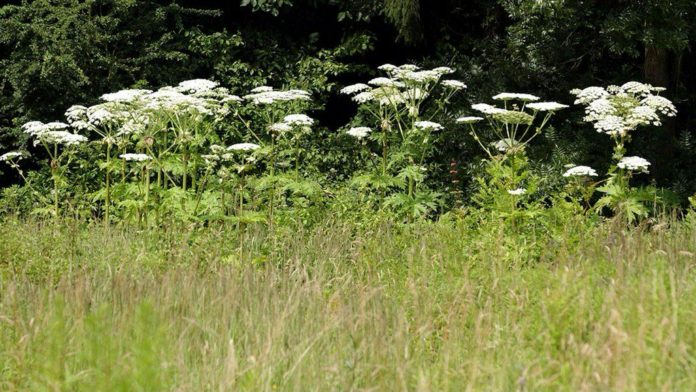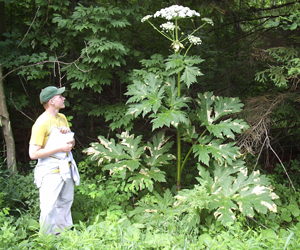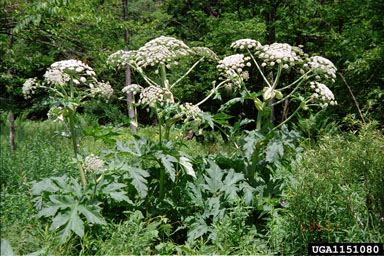
If you have never heard of Giant Hogweed, you’re not alone! But, Giant Hogweed makes Poison Ivy look like a walk in the park. Contact with this plant, combine with exposure to the sun, can produce 3rd degree burns and permanent blindness.
Giant hogweed (Heracleum mantegazzianum) is a Federally listed noxious weed. Its sap, in combination with moisture and sunlight, can cause severe skin and eye irritation, painful blistering, permanent scarring and blindness. Contact between the skin and the sap of this plant occurs either through brushing against the bristles on the stem or breaking the stem or leaves.


The species has been reported in Virginia Maine, New York, Massachusetts, Connecticut, Pennsylvania, North Carolina and other areas in the Pacific Northwest.
What to do if you come in contact with giant hogweed:
Immediately wash the affected area thoroughly with soap and water and keep the area away from sunlight for 48 hours. This plant poses a serious health threat; see your physician if you think you have been burned by giant hogweed. If you think you have giant hogweed on your property, do NOT touch it.
How do you identify giant hogweed?
Giant hogweed is a biennial or perennial herb in the carrot family (Apiaceae) which can grow to 14 feet or more. Its hollow, ridged stems grow 2-4 inches in diameter and have dark reddish-purple blotches. Its large compound leaves can grow up to 5 feet wide. Its white flower heads can grow up to 2 1/2 feet in diameter
Where is giant hogweed found?
Giant hogweed is a native of the Caucasus Mountain region between the Black and Caspian Seas. It was introduced to Europe and the United Kingdom in the late nineteenth century and to the United States in the early twentieth century as an ornamental garden plant. It has become established in New England, the Mid-Atlantic Region and the Northwest. Giant hogweed grows along streams and rivers and in fields, forests, yards and roadsides. It prefers open sites with abundant light and moist soil but it can grow in partially shaded habitats, too.
If you see the plant call the Giant Hogweed Hotline: 1-845-256-3111. Provide photos, detailed directions to the plant infestation and estimate the number of plants.

